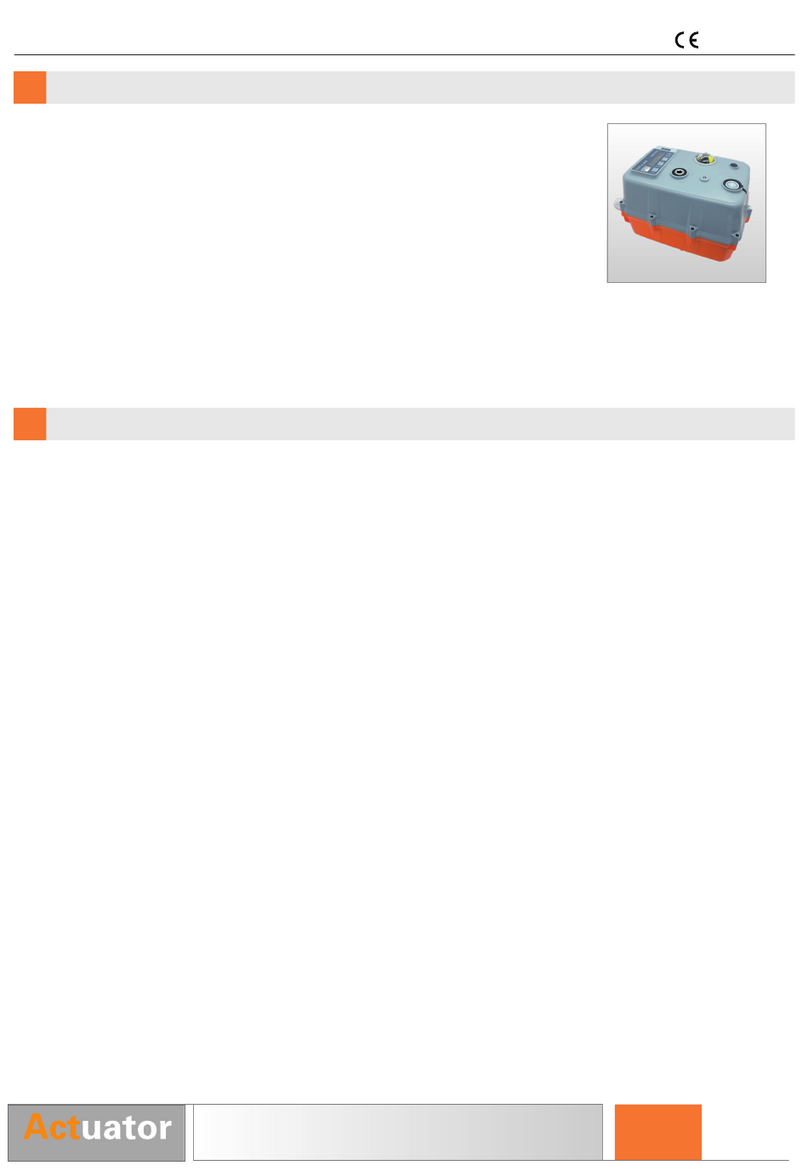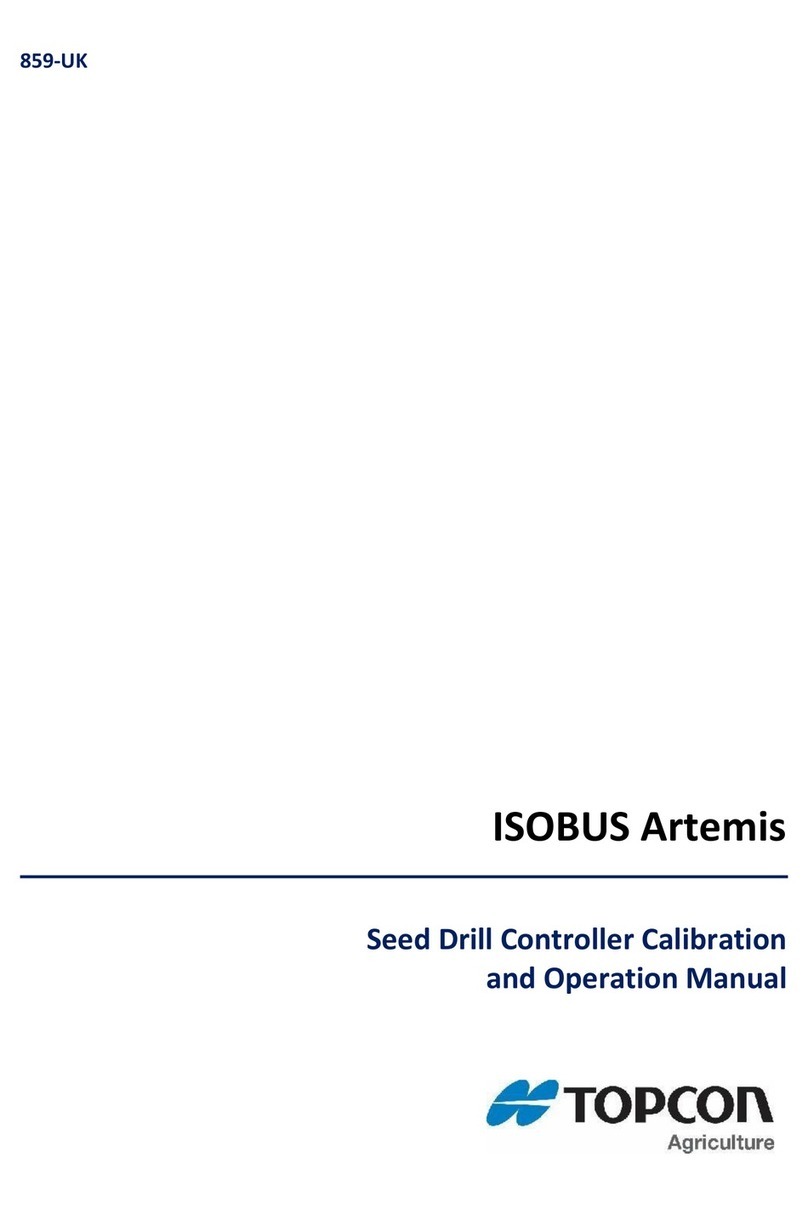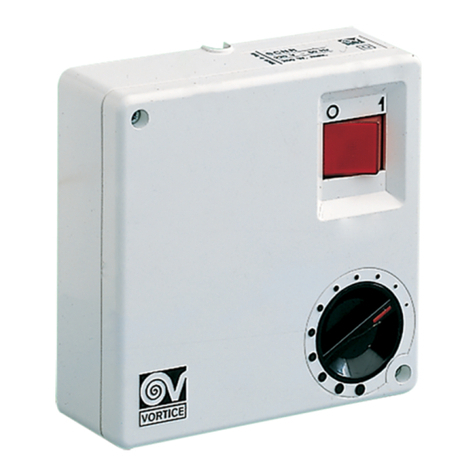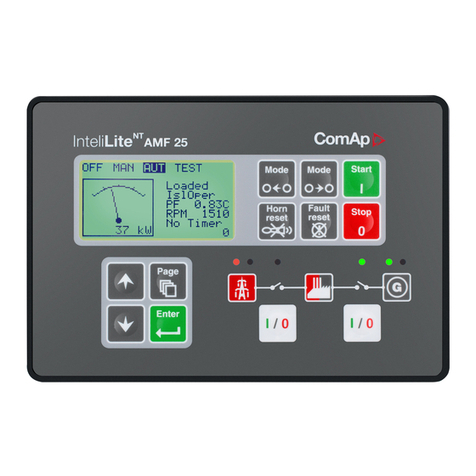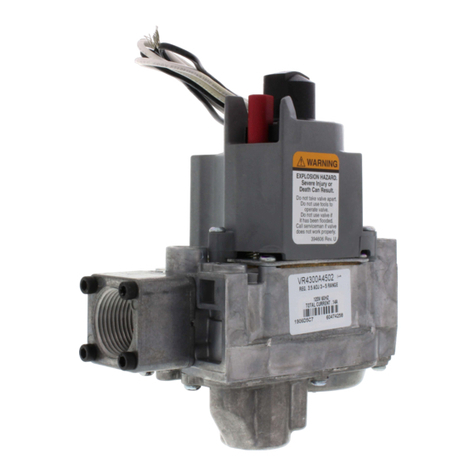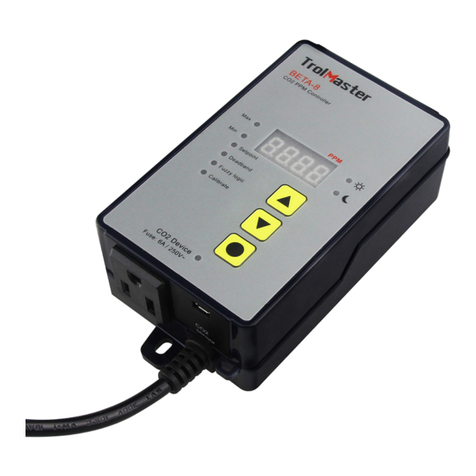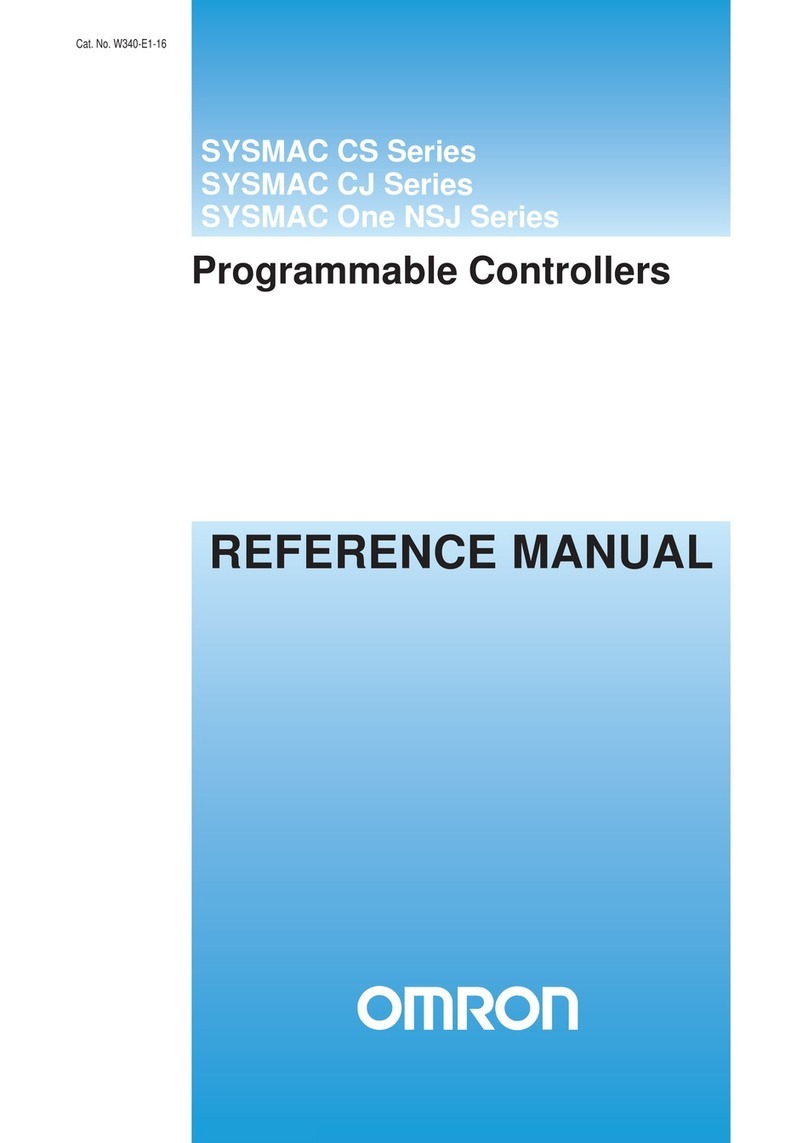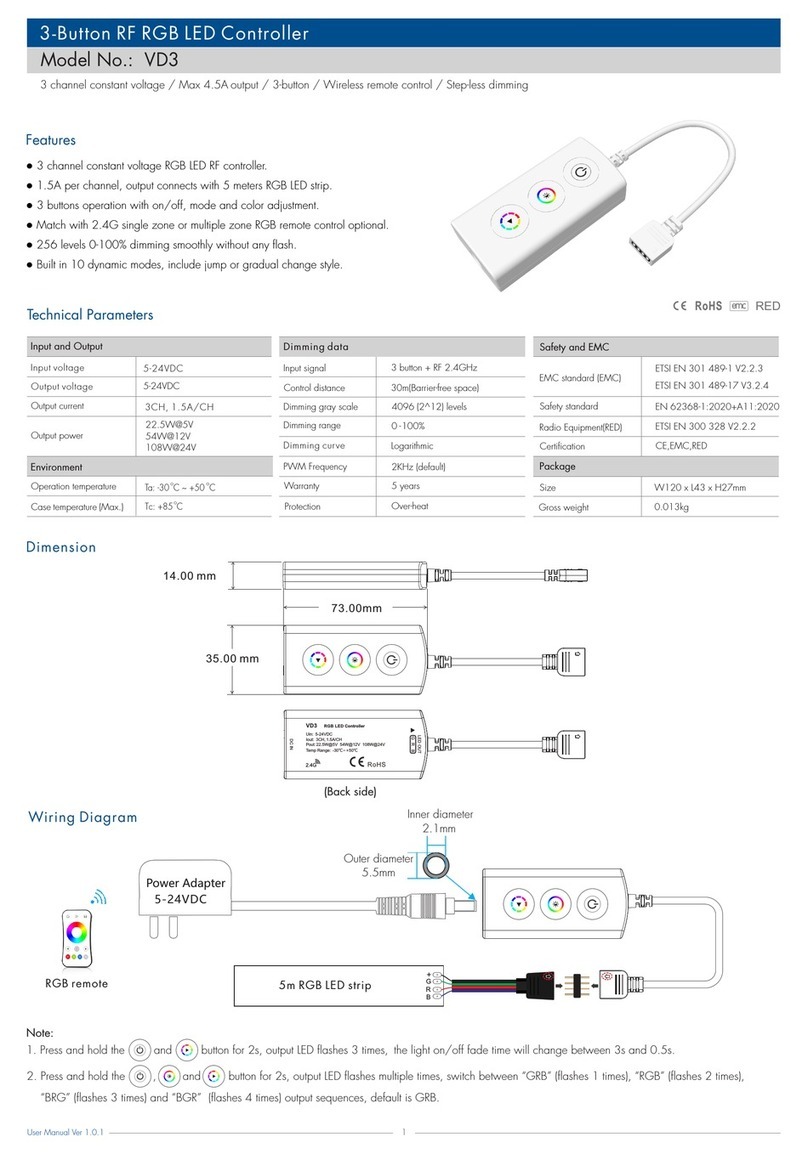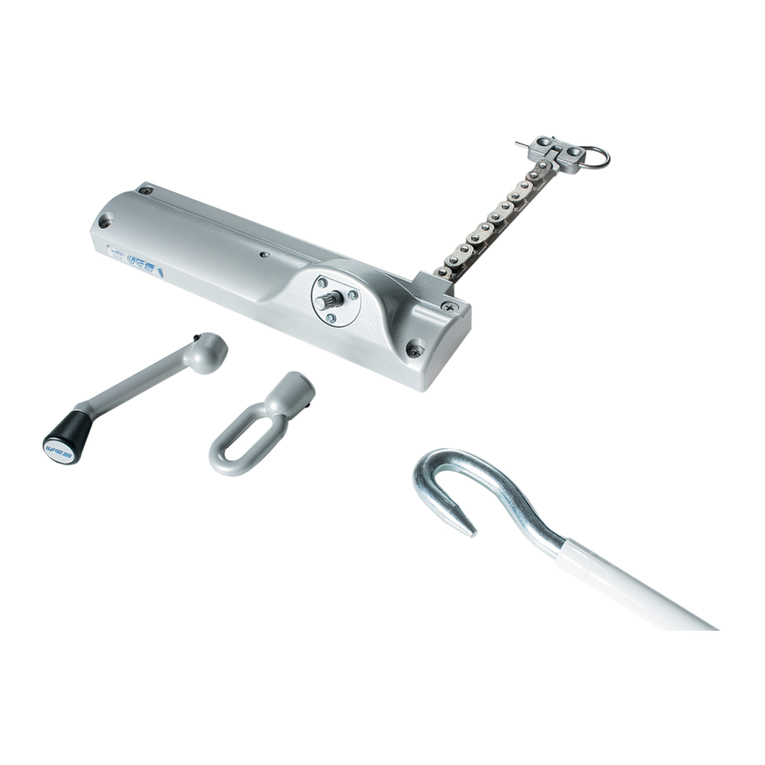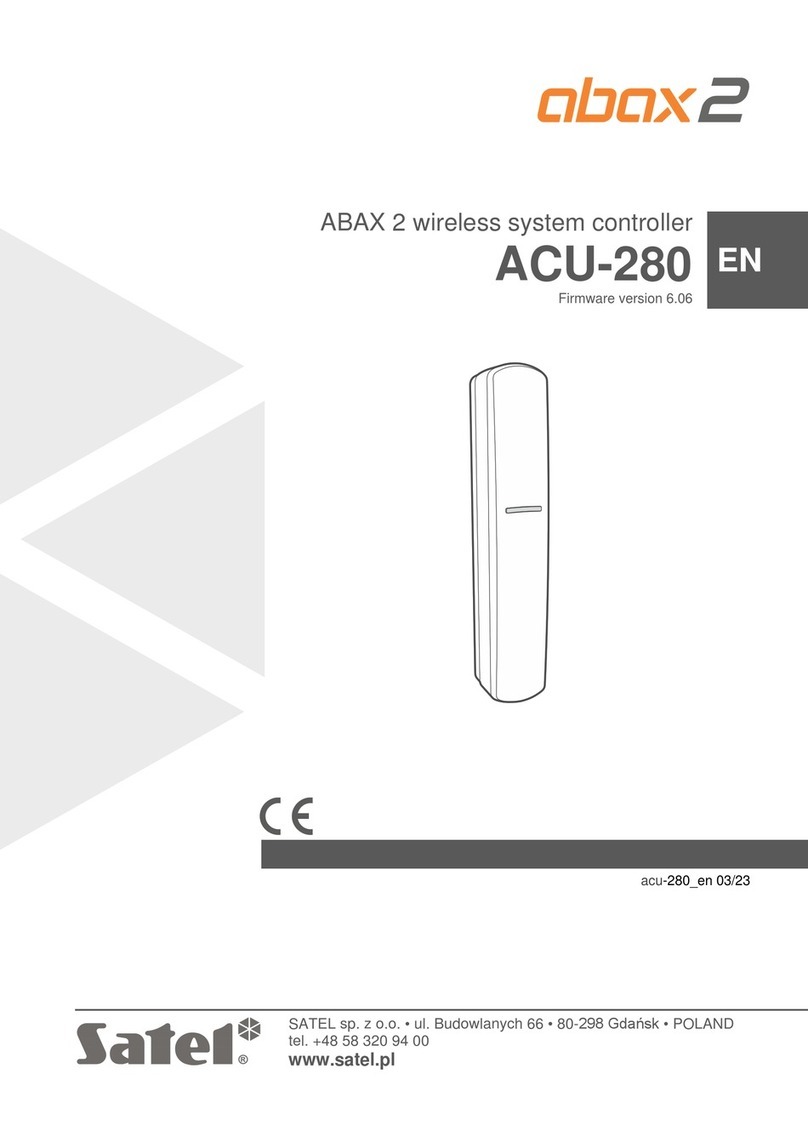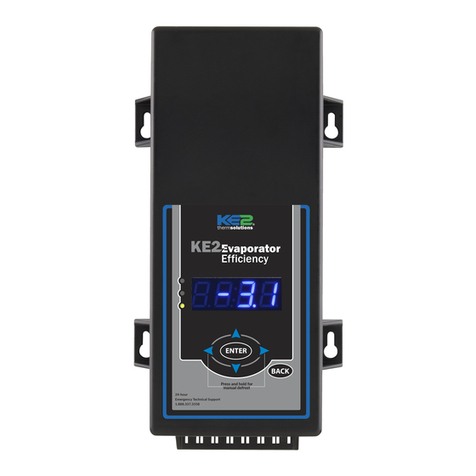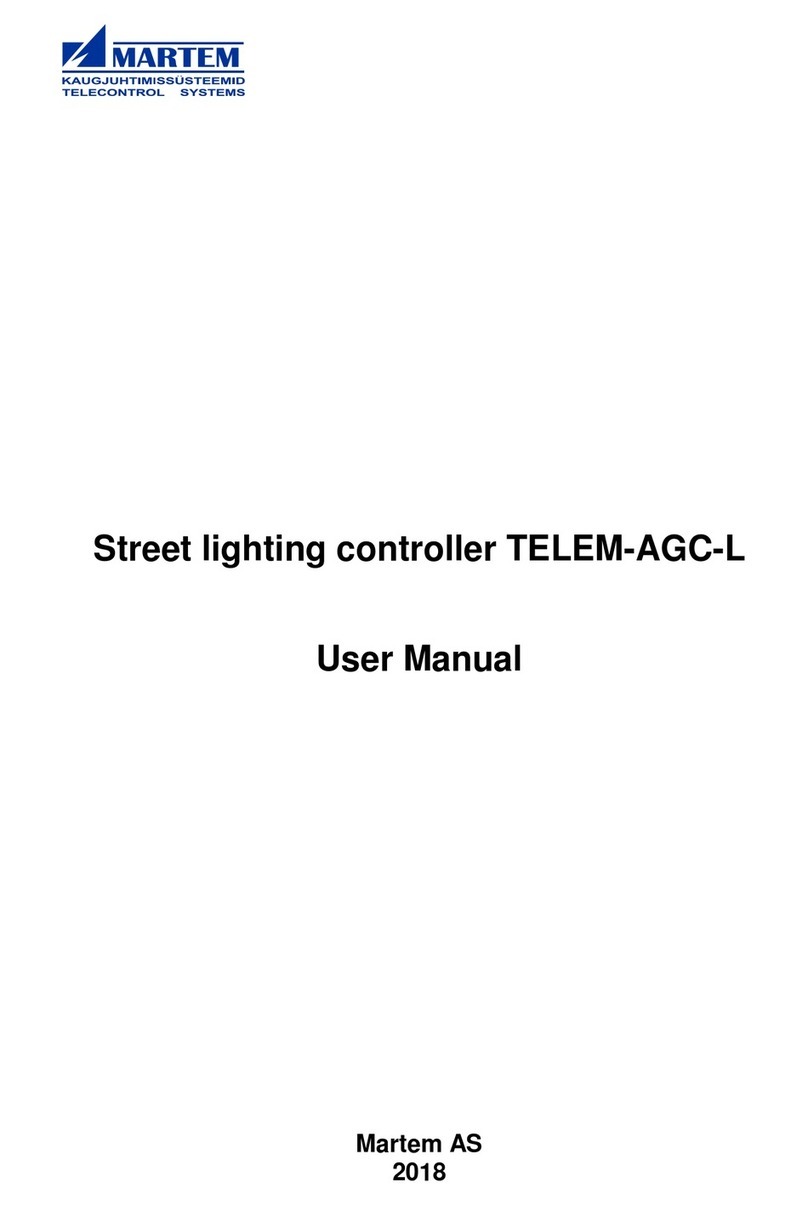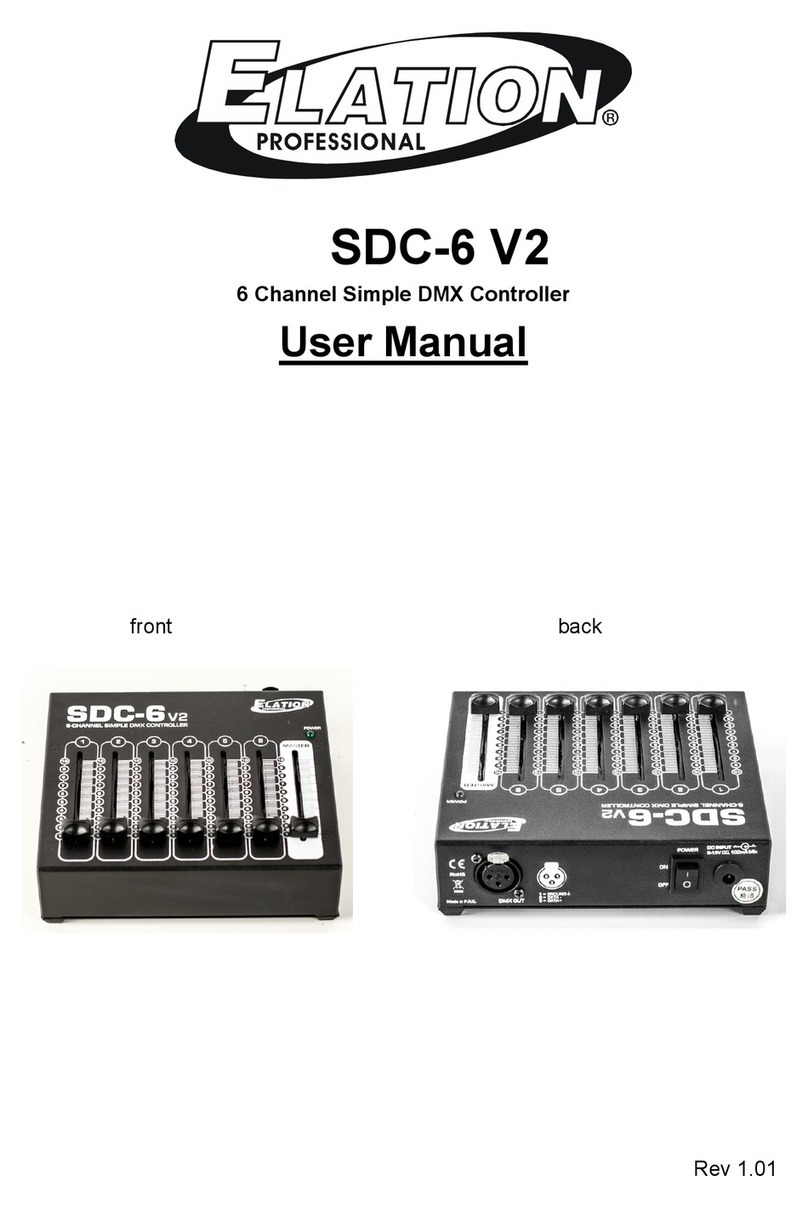BIFFI OLGA-H User manual

OLGA-H –High pressure double acting hydraulic actuator
Use and maintenance manual
© Copyright by BIFFI Italia. All right reserved. Pag. 1
Contents may change without notice
MAN 607
Use and maintenance manual
OLGA-H
HIGH PRESSURE DOUBLE
ACTING HYDRAULIC
ACTUATOR
5
20/04/18
Updated Data-plate
Ermanni
Orefici
Vigliano
4
18/04/16
Updated applicable
regulation (chapter 1.1.1)
Ermanni
Orefici
Vigliano
3
25/02/13
Updated chapter
5.1.1
Ermanni
Stoto
Vigliano
2
31/07/12
General update
Ermanni
Stoto
Vigliano
1
17/11/10
General update
Ermanni
Stoto
Vigliano
0
05/05/99
Document release
Lazzarini
Aliani
Ziveri
Rev.
Date
Description
Prepared
Checked
Approved

OLGA-H –High pressure double acting hydraulic actuator
Use and maintenance manual
© Copyright by BIFFI Italia. All right reserved. Pag. 2
Contents may change without notice
TABLE OF CONTENTS
1General warnings ................................................................ 4
1.1 GENERALITIES..........................................................................4
Applicable regulation .......................................................................4
Terms and conditions ......................................................................4
1.2 Identification plate .......................................................................5
1.3 INTRODUCING THE ACTUATOR..............................................5
1.4 DATA SHEET..............................................................................6
2Installation........................................................................... 6
2.1 CHECKS UPON ACTUATOR RECEIPT.....................................6
2.2 ACTUATOR HANDLING.............................................................7
2.3 STORAGE.................................................................................10
2.4 ACTUATOR ASSEMBLY ON THE VALVE ...............................10
Types of assembly.........................................................................10
Assembly procedure......................................................................11
2.5 hydraulic CONNECTIONS ........................................................13
2.6 ELECTRICAL CONNECTIONS (IF ANY)..................................13
2.7 COMMISSIONING ....................................................................14
3Operation and use ............................................................. 15
3.1 OPERATION DESCRIPTION....................................................15
3.2 RESIDUAL RISKS.....................................................................16
3.3 OPERATIONS...........................................................................16
3.4 CALIBRATION OF THE ANGULAR STROKE ..........................18
3.5 CALIBRATION OF MICROSWITCHES (biffi limit switch box only)
22
3.5 CALIBRATION OF THE OPERATION TIME.............................24
4Operational tests and inspections...................................... 26
5Maintenance ...................................................................... 27
5.1 PERIODIC MAINTENANCE......................................................27
5.2 EXTRAORDINARY MAINTENANCE ........................................30
5.3 Lubrication of mechanism .........................................................38
5.4 DISMANTLING AND DEMOLITION...........................................39
6Troubleshooting ................................................................ 40
6.1 FAILURE OR BREAKDOWN RESEARCH ...............................40
7Layouts.............................................................................. 41
7.1 Spare parts order ......................................................................41
7.2 parts-list for maintenance and replacing procedure...................42
8Date report for maintenance operations.................................. 50

OLGA-H –High pressure double acting hydraulic actuator
Use and maintenance manual
© Copyright by BIFFI Italia. All right reserved. Pag. 3
Contents may change without notice
NOTE:
BIFFI Italia S.r.l pays the highest attention to collecting and verifying the
documentation contained in this user manual. However BIFFI Italia S.r.l. is not
liable for any mistakes contained in this manual, for damage or accidents due to
the use of the latter. The information contained is of exclusive reserved ownership
of BIFFI Italia S.r.l and may be modified without prior notice. All rights reserved.

OLGA-H –High pressure double acting hydraulic actuator
Use and maintenance manual
© Copyright by BIFFI Italia. All right reserved. Pag. 4
Contents may change without notice
1General warnings
The manual is an integral part of the machine, it should
be carefully read before carrying out any operation and
it should be kept for future references.
1.1 GENERALITIES
BIFFI Italia S.r.l actuators are conceived, manufactured and
controlled according to the Quality Control System in compliance with
EN-ISO 9001 international regulation.
1.1.1 Applicable regulation
EN ISO 12100:2010: Safety of machinery –General principles for
design –Risk assessment and risk reduction
2006/42/EC: Machine directive.
2014/68/EU: Directive for pressure PED equipment
2014/35/EU: Directive for low voltage equipment
2014/30/EU: Directive for the electromagnetic compatibility
2014/34/EU: Directive and safety instructions for use in
hazardous area
1.1.2 Terms and conditions
Biffi Italia srl guarantees that all the items produced are free of
defects in workmanship and manufacturing materials and meet
relevant current specifications, provided they are installed, used and
serviced according to the instructions contained in the present
manual. The warranty can last either one year from the date of
installation by the initial user of the product, or eighteen months from
the date of shipment to the initial user, depending on which event
occurs first. All detailed warranty conditions are specified in the
documentation forwarded together with the product. This warranty
does not cover special products or components not warranted by
subcontractors, or materials that were used or installed improperly or
were modified or repaired by unauthorized staff. In the event that a
fault condition be caused by improper installation, maintenance or
use, or by irregular working conditions, the repairs will be charged
according to applicable fees. The warranty and Biffi Italia srl
liability shall lapse in the event that any modification or
tampering whatsoever be performed on the actuator.

OLGA-H –High pressure double acting hydraulic actuator
Use and maintenance manual
© Copyright by BIFFI Italia. All right reserved. Pag. 5
Contents may change without notice
1.2 IDENTIFICATION PLATE
It is forbidden to modify the information and the marks without
previous written authorization by BIFFI Italia S.r.l.
The plate fastened on the actuator contains the following information
(Figure1).
Figure 1 –Data plate
1.3 INTRODUCING THE ACTUATOR
The hydraulic actuator series OLGA-H was engineered and is
manufactured to provide maximum torque output with minimum
supply pressure. The OLGA-H actuators is suitable for any quarter
turn application such as ball, plug, butterfly valves or dampers, in
both On-Off and Modulating heavy duty service.
The actuator (see figure 2) is made up of a weatherproof scotch yoke
mechanism transforming the linear movement of the pneumatic
cylinder (on closing or opening) into the rotary movement, which is
necessary for operation. The angular stroke of the yoke is adjustable
between 82° and 98° by means of the external mechanical stops
screwed into the left wall of the mechanism housing and into the end
flange of the pneumatic cylinder. The cover of the scotch yoke
mechanism is arranged for the assembly of the required accessories
(positioner, signalling limit switches, position transducer, etc.) by
means of proper matching units. The above mentioned accessories
are operated by the actuator drive sleeve. The housing of the scotch
yoke mechanism has a flange with threaded holes to fix the actuator
to the valve either directly or, if required, with the interposition of an
adaptor flange or a mounting bracket. The actuator yoke has a hole
with keyways suitable for the assembly of an insert bush the internal
hole of which is machined (by BIFFI or at Customer's care),
according to the shape and dimensions of the valve stem. BIFFI can

OLGA-H –High pressure double acting hydraulic actuator
Use and maintenance manual
© Copyright by BIFFI Italia. All right reserved. Pag. 6
Contents may change without notice
supply different types of control system following Customer's
requirements.
The expected lifetime of actuator is approximately 25 years .
Figure 2 –Identification of actuator parts
1.4 DATA SHEET
2Installation
2.1 CHECKS UPON ACTUATOR RECEIPT
❑Check that the model, the serial number of the actuator and the
technical data reported on the identification plate correspond with
those of order confirmation (Sect. 1.2).
❑Check that the actuator is equipped with the fittings as provided for
by order confirmation.
❑Check that the actuator was not damaged during transportation: if
necessary renovate the painting according to the specification
reported on the order confirmation.
❑If the actuator is received already assembled with the valve, its
settings have already been made at the factory.
Supply fluid
Hydraulic oil, special version for fire-
resistant fluids
Operating temperature
Standard: from –30°C to +100°C
Optional: from –60° to +140°C
Supply pressure
Please refer to technical document:
“actuator data-sheet”
Hydraulic cylinder
Optional: for OLGA-H-
MHP models or
second pneumatic
cylinder for “double-
cylinders” models
(optional)
Hydraulic cylinder
Scotch-yoke
mechanism
High pressure
control valve
enclosure
(optional)
Manual Hand-Pump
MHP (optional)
Valve position
indicator

OLGA-H –High pressure double acting hydraulic actuator
Use and maintenance manual
© Copyright by BIFFI Italia. All right reserved. Pag. 7
Contents may change without notice
If the actuator is delivered separately from the valve, it is
necessary to check, and, if required, to adjust, the settings of the
mechanical stops (Sect. 3.4) and of micro-switches (if any) (Sect.
3.5).
2.2 ACTUATOR HANDLING
The lifting and handling of the actuator must be done by
qualified personnel and in accordance with the laws and
regulations in force. Avoid the lifted actuator to be hung
above the personnel.
The actuator must be lifted by means of a suitable lifting
apparatus. The weight of the actuators is indicated in
the technical documentation attached to the equipment
itself.
For lifting and moving the actuator, use only hooks
fitted with safety latch, like the one, for example, shown
in follow figure 2.1
Picture 2.2 –Lifting points for OLGA-H / OLGA-H MHP / OLGA-H
MSJ
1-2=Lifting points ( obligatory ) 3=Balancing point
Figure 2.1 Example of hook with
safety latch

OLGA-H –High pressure double acting hydraulic actuator
Use and maintenance manual
© Copyright by BIFFI Italia. All right reserved. Pag. 8
Contents may change without notice
1 = point of support - 2 = supports for lateral positioning 3 = don’t lay the
actuator on tie-rods of cylinder /s and –3 = don’t lay act. from accessories
(manual hand-pump, manual jack-screw, pneumatic control group etc. )
•For lifting unbalanced loads, use ropes of different lengths
or chains with adjustable length.
•Check each time the conditions of all lifting equipment used
and discard it if not in perfect working order.
•Do not knot or twist the ropes so as not to reduce the lifting
capacity or produce torsional effects on the load being lifted.
•Use the utmost caution and remain at a safe distance from
lifted actuator unless absolutely necessary; do not stand or pass
under suspended loads.
•Pay attention in putting under tension the ropes to prevent
the load shifting sideways in an uncontrolled manner.
•Use slings of such length that the angles of the leg from
vertical are as narrow as possible (MAX < 20°).
•During handling, do not transport the suspended actuator
above staff members in charge of the operation.
DO NOT USE the lifting eyelets on actuator to lift valve +
actuator assembly
Figure 2.3

OLGA-H –High pressure double acting hydraulic actuator
Use and maintenance manual
© Copyright by BIFFI Italia. All right reserved. Pag. 9
Contents may change without notice
For the transport of OLGA-H actuators with hydraulic manual hand-
pump, when it was necessary put in horizontal position the tank of
MHP, to avoid leakage on oil level stick, substitute these with a blind-
plug during the transport (a specific warning label for transport in
horizontal position is attached on the MHP body); remove the blind
plug and restore the dipstick before operate the actuator with MHP.
BIFFI hydraulic manual hand-pump must be
maintained with tank in upper position to operate
the actuator with MHP correctly
OMFB manual hand-pump should be transported
and used with MHP tank in horizontal position, but in position 3 of
follow picture (extracted from OMFB technical documentation) it’s
necessary change the position of suction pipe and breather cap :

OLGA-H –High pressure double acting hydraulic actuator
Use and maintenance manual
© Copyright by BIFFI Italia. All right reserved. Pag. 10
Contents may change without notice
2.3 STORAGE
If the actuator needs storage, before installation follow these steps:
❑Place it on a wood surface in order not to deteriorate the area of
valve coupling.
❑Make sure that plastic plugs are present on the hydraulic and
electrical connections (if present).
❑Check that the cover of the control group and of the limit switch box
(if any) are properly closed.
If the storage is long-term or outdoor:
❑Keep the actuator protected from direct weather conditions.
❑Replace plastic plugs of hydraulic and electrical connections (if any)
with metal plugs that guarantee perfect tightness.
❑Coat with oil, grease or protection disc, the valve coupling area.
❑Periodically operate the actuator (Sect. 3).
2.4 ACTUATOR ASSEMBLY ON THE VALVE
Types of assembly
For coupling to the valve, the housing is provided with a flange with
threaded holes according to BIFFI standard tables (SCN6200;
SCN6200-1; SCN6201; SCN6201-1). The number, dimensions and
diameter of the holes are made in accordance with ISO 5211, but for
actuator models 0.3 to 6 the holes are drilled on the centreline in
order to allow an easier assembly of an intermediate flange, when
required. This intermediate flange ( or spool-piece ) can be supplied
when the valve flange can‘t directly match the actuator flange in its
“standard” configuration. For the biggest actuator models, the
actuator flange can be machined in accordance with the valve flange
dimensions. The yoke has bored with keyways for coupling to the
valve stem, the dimensions of which are according to BIFFI standard
tables SCN6200* and SCN6201*.If required, for the standard models
size 0.3 to 6, Biffi can supply an insert bush with un-machined bore in
accordance with Biffi standard table SCN6202. On request the insert
bush bore can be machined by Biffi to couple the valve stem. The
particular execution of the flange and bushing allow the actuator to
be rotated by 90° in 4 different positions according to the following
figure:

OLGA-H –High pressure double acting hydraulic actuator
Use and maintenance manual
© Copyright by BIFFI Italia. All right reserved. Pag. 11
Contents may change without notice
Position 2 Position 3 Position 4
Rotate insert-bush
180° around vertical-
standard position (1)
Rotate insert-bush 180°
around axis A-A, from
position 2
Rotate insert-bush
180° around axis A-A
from position 1
Insert bush turned upside down
Figure 3 –Insert bush + intermediate coupling flange
The BIFFI insert bush with 2 external keys at 45° allows to position
the keyway for the valve every 90°. Consequently actuator can be
mounted in 4 positions at 90° on top of the valve. For biggest
actuator models, the bore of the yoke can be machined according to
the dimensions of valve stem.
Assembly procedure
Failure to comply with the following procedures may impair
product warranty.

OLGA-H –High pressure double acting hydraulic actuator
Use and maintenance manual
© Copyright by BIFFI Italia. All right reserved. Pag. 12
Contents may change without notice
Installation, commissioning and maintenance and repair works
should be carried out by qualified staff. A non-conforming
assembly could be the source of serious accidents.
For actuator assembly on the valve:
Check that the assembly position, as shown on the
documentation, complies with system’s geometry. Check the
consistency of the parts of actuator-valve coupling.
❑Operate the actuator so that it reaches the position matching valve
position (Section 3.3).
❑Lubricate valve stem with oil or grease.
❑Properly clean and remove grease from coupling flange surfaces.
❑Connect, if supplied separately, the adjustment insert to valve stem
and fasten it with the special fastening pins.
❑Lift the actuator using the special lifting points (Sect. 2.2).
❑Install the actuator so that valve stem inserts in the coupling area.
This coupling should be made without forcing.
❑Fasten the two parts with the threaded connections (screws, tie
rods, nuts). If holes of coupling flanges are not aligned, adequately
operate the actuator if necessary move the mechanical stops
backwards (Sect. 3.4).
❑Fasten threaded connections. Please refer to Table 1.
Table 1: nuts tightening torque
Threading
Tightening torque (Nm)
M8
20
M10
40
M12
70
M14
110
M16
160
M20
320
M22
420
M24
550
M27
800
M30
1100
M33
1400
M36
1700
The screwing values in Table 1 were calculated considering the
materials ASTM A320 L7 for screws or tie rods and ASTM A194
gr.2H for the nuts.

OLGA-H –High pressure double acting hydraulic actuator
Use and maintenance manual
© Copyright by BIFFI Italia. All right reserved. Pag. 13
Contents may change without notice
2.5 HYDRAULIC CONNECTIONS
Check that the values of hydraulic supply available are
compatible with those reported on the identification plate of the
actuator.
The connections should be made by qualified staff. Use pipes,
fittings and connections appropriate as for type, material and
dimensions.
Connect the actuator to the hydraulic feed line with fittings and pipes
in accordance to the plant specifications. They must be sized
correctly in order to guarantee the necessary oil flow for the
operation of the actuator, with pressure drops not exceeding the
maximum allowable value. The shape of the connecting piping must
not cause excessive stress to the inlets of the actuator. The piping
must be suitably fastened so as not to cause excessive stress or
loosening of threaded connections, if the system undergoes strong
vibrations. Every precaution must be taken to ensure that any solid or
liquid contaminants, which may be present in the hydraulic pipe-work
to the actuator, are removed to avoid possible damages to the unit or
loss of performance. The inside of the pipes used for the connections
must be well-cleaned before use: wash them with suitable
substances and blow through them with oil or nitrogen. The ends of
the tubes must be well debarred and cleaned. Once the connections
are completed, operate the actuator and check that it functions
correctly, that the operation times meet the plant requirements and
that there are no leakages in the hydraulic connections.
.
2.6 ELECTRICAL CONNECTIONS (IF ANY)
Use components appropriate as for type, material and
dimensions. The connections should be made by qualified staff.
Before carrying out any operation, cut line power off
Safety provisions :
2006/95/EC: Directive for low voltage equipment (until 19 April
2016) 2014/35/EU from 20 April 2016
2004/108/EC: Directive for the electromagnetic compatibility
(until19 April 2016) 2014/30/EU from 20 April 2016
94/9/CE: Directive and safety instructions for use in hazardous
Area(until 19 April 2016) 2014/34/EU from 20 April 2016
Remove plastic plugs from cables entries
❑Screw firmly the cable glands.
❑Introduce connection cables.
❑Make the connections in compliance with applicable wiring diagrams
on the documentation supplied.
❑Screw the cable gland.

OLGA-H –High pressure double acting hydraulic actuator
Use and maintenance manual
© Copyright by BIFFI Italia. All right reserved. Pag. 14
Contents may change without notice
❑Replace the plastic plugs of unused entries with metal plugs.
Picture 2 –Junction box on Control group (if foreseen)
2.7 COMMISSIONING
Check that values of electrical supply to the control group ( if
foreseen ) are compatible with those on the plate on the junction
box (Picture 2). Installation, commissioning and maintenance
and repair works should be made by qualified staff.
Upon actuator commissioning please carry out the following checks:
❑Check that paint is not be damaged during transport, if necessary
repair the damages to paint coat.
❑Before start up and afterwards every 6 months check accumulator
pre-charging pressure (please check the value in technical data-
sheet supplied
❑Check that the values of hydraulic supply available in the system are
compatible with those reported on the identification plate of the
actuator (Figure 2) and on the documentation supplied.
❑Check that the feed voltage values of the electric components
(solenoid valve coils, micro-switches, pressure switches, etc.) are
compatible with those reported on the identification plate of the
actuator (Figure 1).
❑Check that the setting of the components of the actuator control unit
(pressure regulator, pressure switches, flow control valves, etc.)
meet the plant requirements.
❑Carry out all kinds of operations and check their proper execution
(Sect. 3.3).
❑Check the absence of leakages in the cylinder and in hydraulic
connections. If necessary tighten the nuts of the pipe-fittings
❑Check proper operation of all the due signalling ( valve position,
supply pressure etc. )
❑Make a complete functional test in order to verify all the operations
Ground

OLGA-H –High pressure double acting hydraulic actuator
Use and maintenance manual
© Copyright by BIFFI Italia. All right reserved. Pag. 15
Contents may change without notice
are executed according to operating schematic diagram supplied.
3Operation and use
3.1 OPERATION DESCRIPTION
In the normal operating situation, the double acting actuator is fed by
pressurised oil which flows into the relevant cylinder chamber (for
example opening). The cylinder piston stroke causes the actuator
operation and the consequent valve movement to the operational
position requested (in this case to the “open” position).
Upon a demand, the closing chamber the cylinder is fed by pressurised
oil and at the same time the oil is discharged from the open chamber
into the return line: the actuator performs the closing operation driven
by the piston movement, and the valve moves from the open position to
the close (safety-related) position.
For local or remote operations, please refer to par. 3.3.1 , 3.3.2 , 3.3.3
and 3.34 and prior to technical documentation furnished with actuators.
Typical schematics for various applications are follow attached for
information only
The power and control systems are supplied on specific customer
demand.
For all the relevant information please refer to the specific
technical documentation supplied.

OLGA-H –High pressure double acting hydraulic actuator
Use and maintenance manual
© Copyright by BIFFI Italia. All right reserved. Pag. 16
Contents may change without notice
3.2 RESIDUAL RISKS
The actuator has parts under pressure.
Use the due caution. Use individual protections provided for by
the laws and provisions in force.
3.3 OPERATIONS
( refer to specific document: operating diagram furnished )
Local manual operation
Picture 5-6 –OLGA-H with hydraulic manual hand-pump
The OLGA-H actuators can only
have the hydraulic manual
override for local operation. The
compact hydraulic control unit
mounted on the actuator consist
of: - hand pump - directional
control valve to select “to open”
or “to close” actuator operation
- relief valve to prevent the oil
pressure delivered by the hand
pump from exceeding the
maximum allowable value - oil
tank -
Accessory are available on
request, for instance :
- dual pilot operated check valve
- bladder-type or piston-type
accumulator delivered by the
hand pump from exceeding the

OLGA-H –High pressure double acting hydraulic actuator
Use and maintenance manual
© Copyright by BIFFI Italia. All right reserved. Pag. 17
Contents may change without notice
maximum allowable value. On request the emergency manual
override can be included in the power pack.
Emergency manual operation by MHP
The OLGA-H actuators can have an emergency manual override in
addition to the local and/or remote control panel which controls the oil
supplied by a power pack for the
“normal” actuator operation. The
emergency manual override, mounted
on the actuator, consists of a hydraulic
manual override and a hydraulic
manual selector to choose actuator
“Normal operation” with oil supply from
a power pack, or the “Emergency
manual operation”. The compact
hydraulic override consist of:
-hand pump
-directional control valve to select
the “to open” or “to close” operation
by hand pump
-relief valve to prevent the oil
pressure delivered by the hand
pump from exceeding the maximum
allowable value.
On request the emergency manual
override can be included in the
power pack.
3.3.3 Emergency manual operation by MSJ - MHW
The MSJ jackscrew manual
override can be supplied for
OLGA actuators from model 0.3
to model 3. The override is
mounted on the left side of the
actuator, the jackscrew end is
screwed into the guide block. A
bronze split screw nut is mounted
inside the body. By rotating the
engagement lever, the screw nut
is engaged with the jackscrew. When the screw nut is engaged with the

OLGA-H –High pressure double acting hydraulic actuator
Use and maintenance manual
© Copyright by BIFFI Italia. All right reserved. Pag. 18
Contents may change without notice
jackscrew manual operation follows by rotating the body of the screw
container by a lever. The manual jackscrew, on request, could be
furnished with fixed hand-wheel welded on it.
3.4 CALIBRATION OF THE ANGULAR STROKE
The angular stroke of the yoke can be adjusted between 82°98°
(4° with respect to the nominal positions of complete opening and
closing) by means the mechanical stops screwed into the left side of
the housing (open valve) and into the end flange of the hydraulic
cylinder (closing) (Picture 7).
Picture 7 –Mechanical stops
For the adjustment of the mechanical stop on the end flange of
cylinder, follow these steps (Figure 8):
❑Remove with the specific wrench (c2) the plug of cylinder end-
flange.
❑Insert a wrench for Allen keys (c1) in the through hole until
reaching the adjustment pin.
❑Turn counter-clockwise to increase the angular stroke, turn
clockwise to decrease it.
❑When the adjustment is over tighten the plug with the wrench c2.

OLGA-H –High pressure double acting hydraulic actuator
Use and maintenance manual
© Copyright by BIFFI Italia. All right reserved. Pag. 19
Contents may change without notice
Figure 8 –Mechanical stop of the cylinder
HYDRAULIC
CYLINDER
DIAMETER
WRENCH
C1
(mm)
WRENCH
C2
(mm)
From 16
To 28
8
19
From 28
To 40
8
22
From 45
To 60
12
27
From 70
To 175
14
36
From 200
To 235
22
36
From 235
To 300
22
36
For the adjustment of the mechanical stop screwed into the left side of
housing, follow these steps (Figure 8 and 9):
❑Loosen the locknut (d) with the specific wrench (c2).
❑Adjust the pin (g)/screw (v) with the adequate wrench (c1).
❑Turn counter-clockwise to increase the angular stroke, turn
clockwise to decrease it.
❑When the adjustment is over tighten the locknut (d).

OLGA-H –High pressure double acting hydraulic actuator
Use and maintenance manual
© Copyright by BIFFI Italia. All right reserved. Pag. 20
Contents may change without notice
ACTUATOR MODEL
WRENCH C1
(mm)
WRENCH C2
(mm)
14
17
60
18
17
60
32
17
60
50
17
60
ACTUATOR MODEL
WRENCH C1
(mm)
WRENCH C2
(mm)
0,1
30
30
0,3
30
30
0,9
30
30
1,5
41
41
3
41
41
6
46
46
Figure 9 - Mechanical
stop on the housing
Figure 10 -
Mechanical stop on
the housing
Other manuals for OLGA-H
2
This manual suits for next models
1
Table of contents
Other BIFFI Controllers manuals
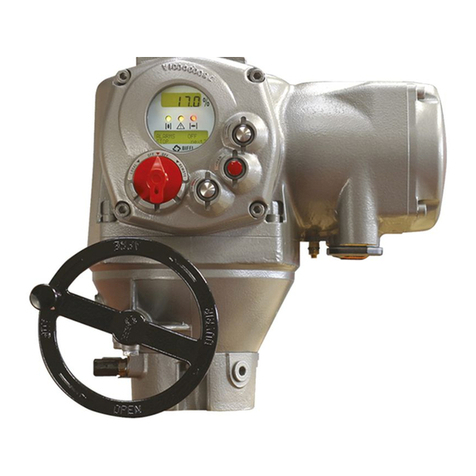
BIFFI
BIFFI F01-2000 Parts list manual
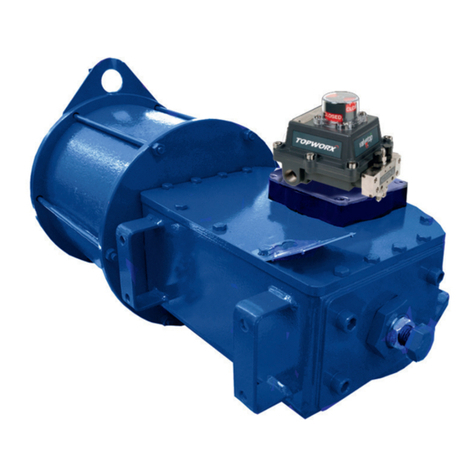
BIFFI
BIFFI ALGA Series User manual

BIFFI
BIFFI F02 manual
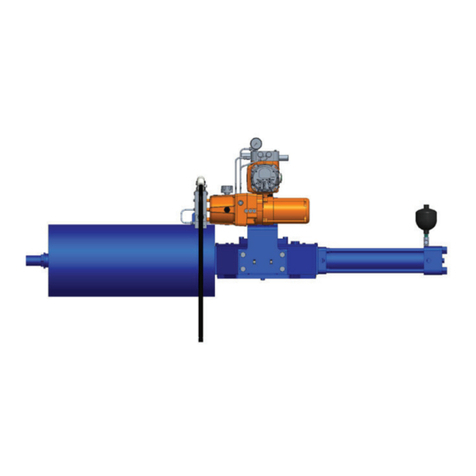
BIFFI
BIFFI EHO User manual
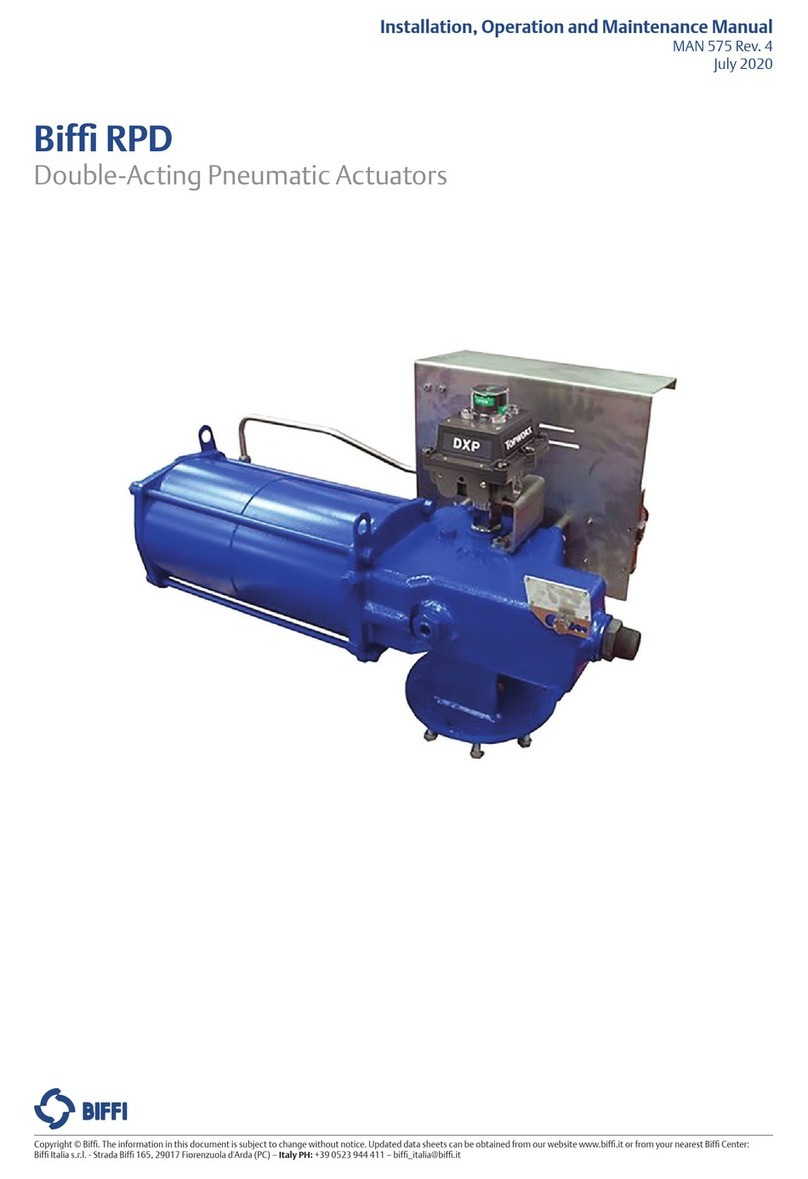
BIFFI
BIFFI RPD Series User manual
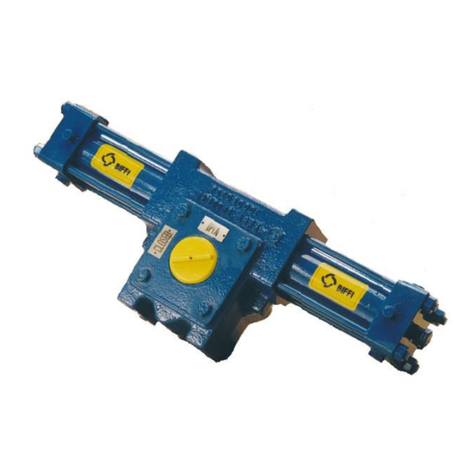
BIFFI
BIFFI RPHD User manual
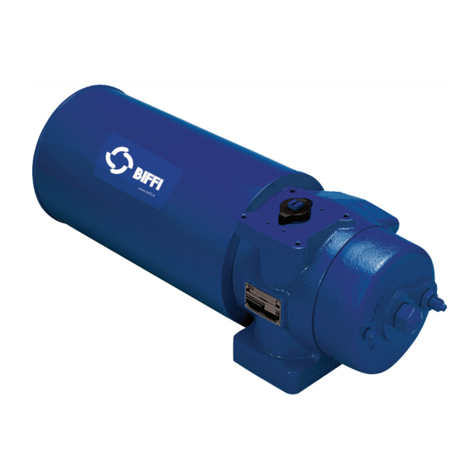
BIFFI
BIFFI FCB Series Operating instructions
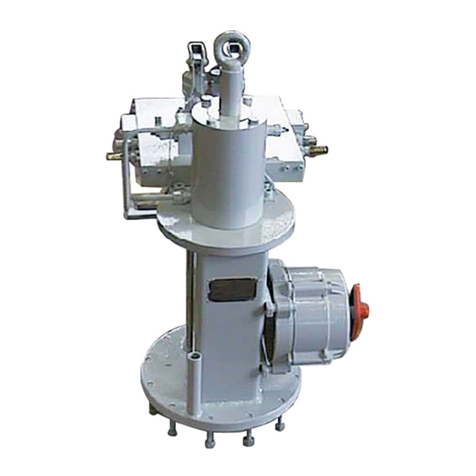
BIFFI
BIFFI HLA User manual
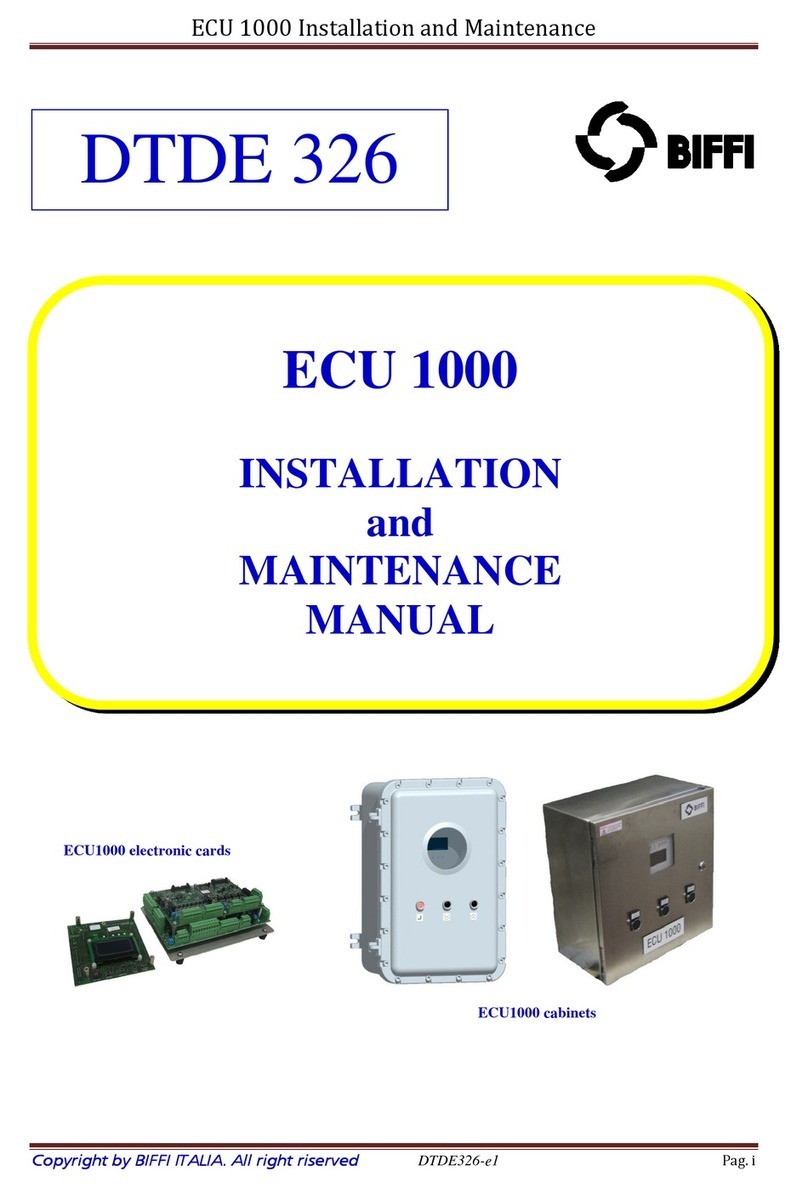
BIFFI
BIFFI ECU 1000 Manual
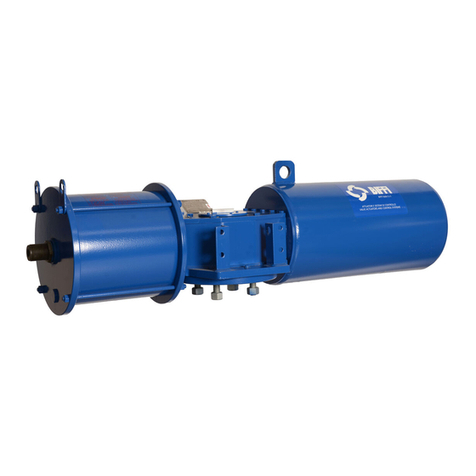
BIFFI
BIFFI ALGAS User manual
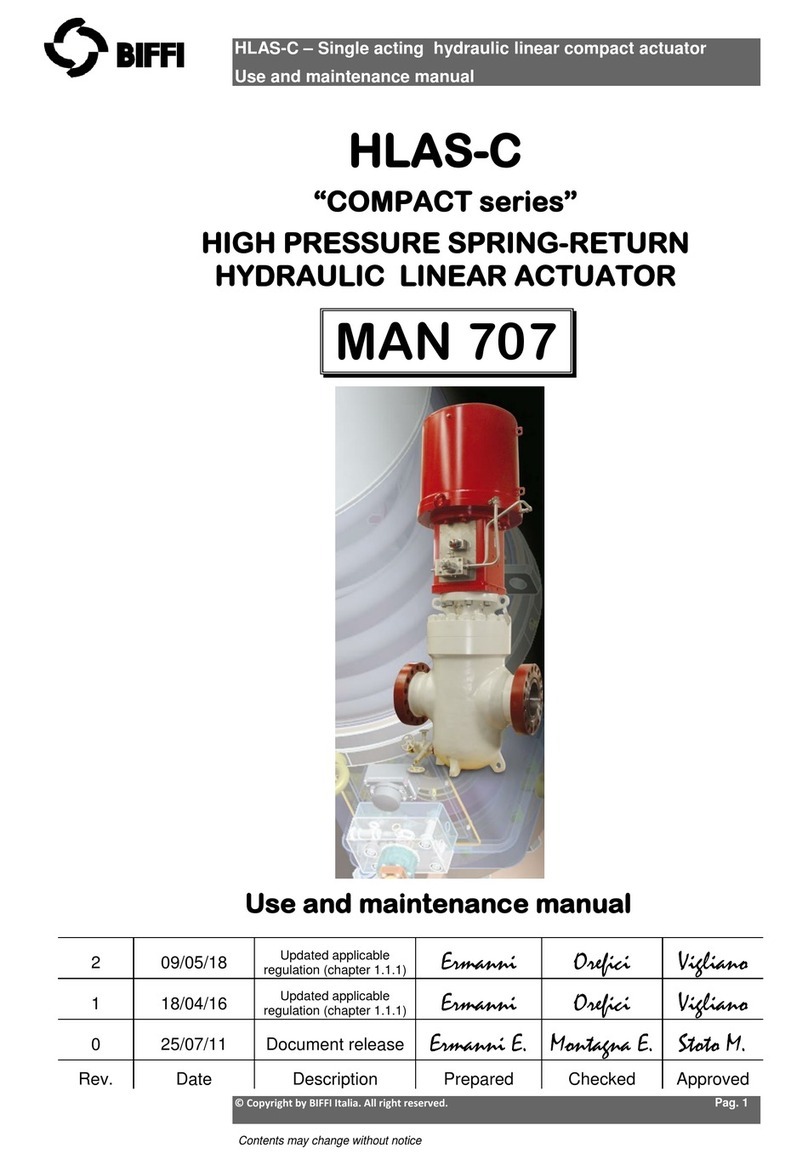
BIFFI
BIFFI COMPACT Series User manual
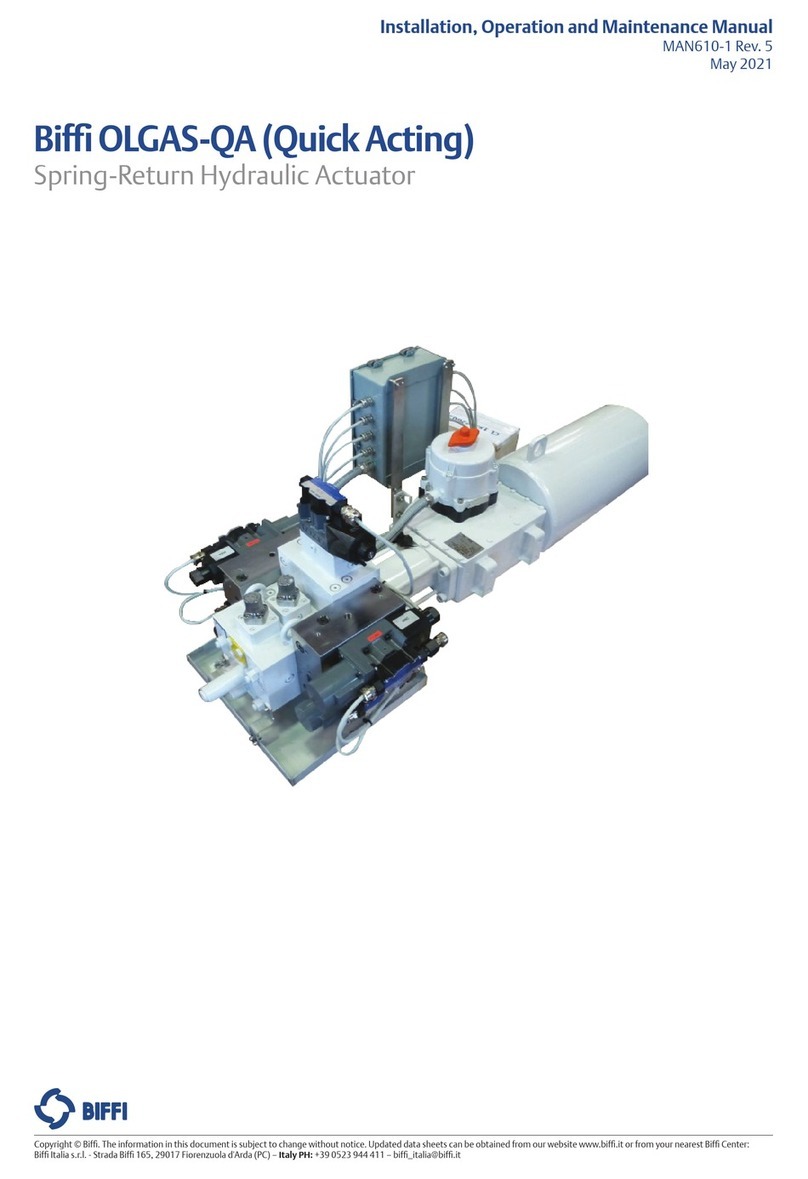
BIFFI
BIFFI OLGAS-QA User manual
BIFFI
BIFFI ICON3000 Series User manual

BIFFI
BIFFI GIGS 0.3 User manual
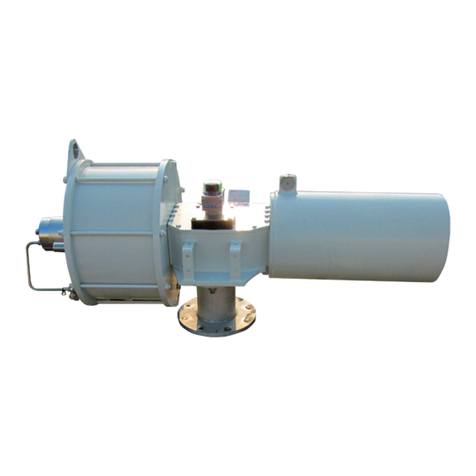
BIFFI
BIFFI ALGAS-QA Series Manual

BIFFI
BIFFI HLA Series User manual

BIFFI
BIFFI OLGA User manual
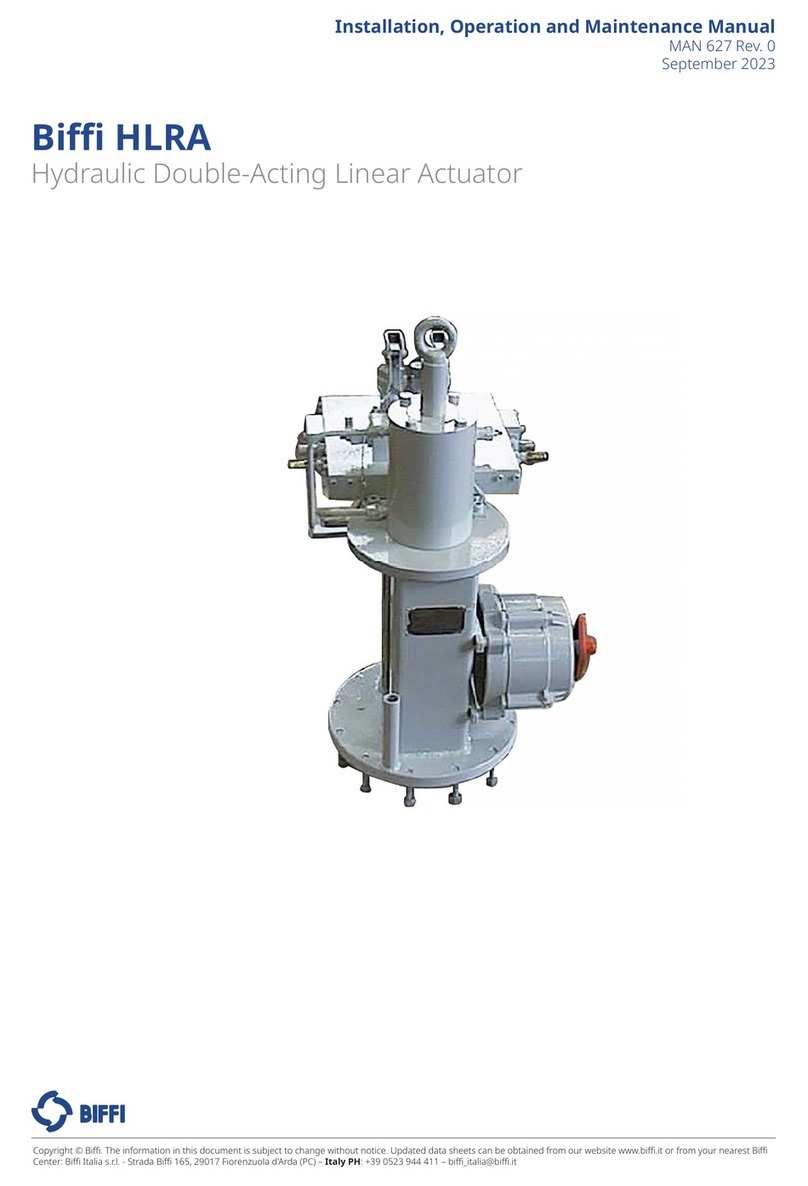
BIFFI
BIFFI HLRA User manual
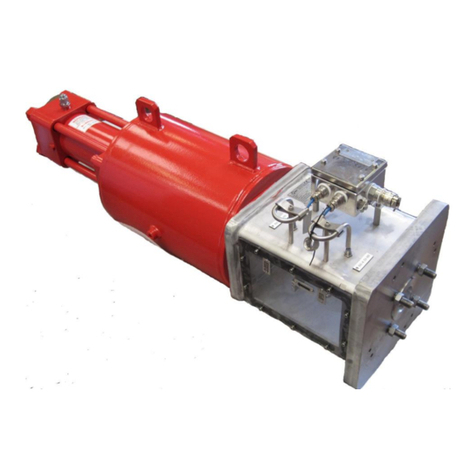
BIFFI
BIFFI HLAS User manual

BIFFI
BIFFI RP14 User manual



